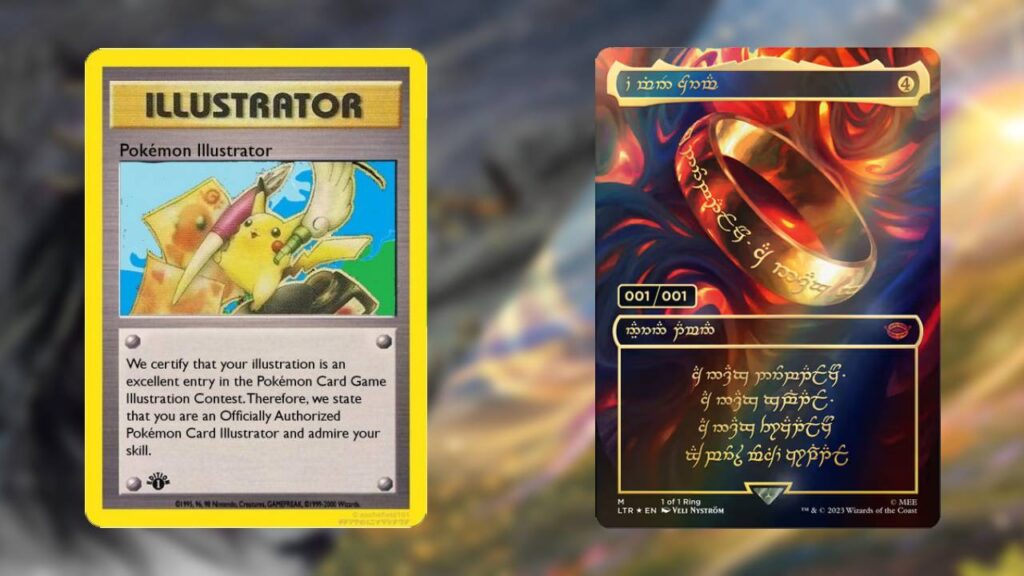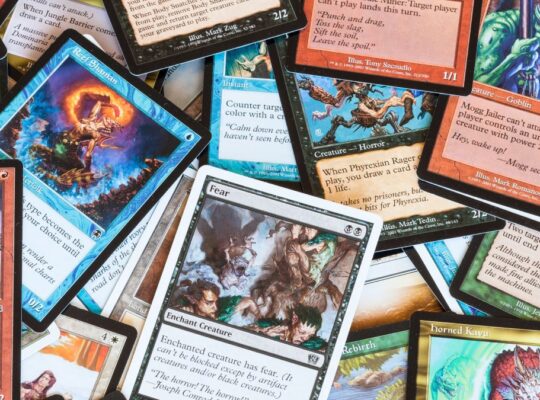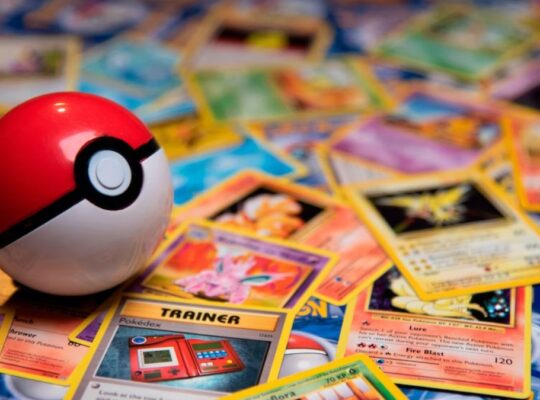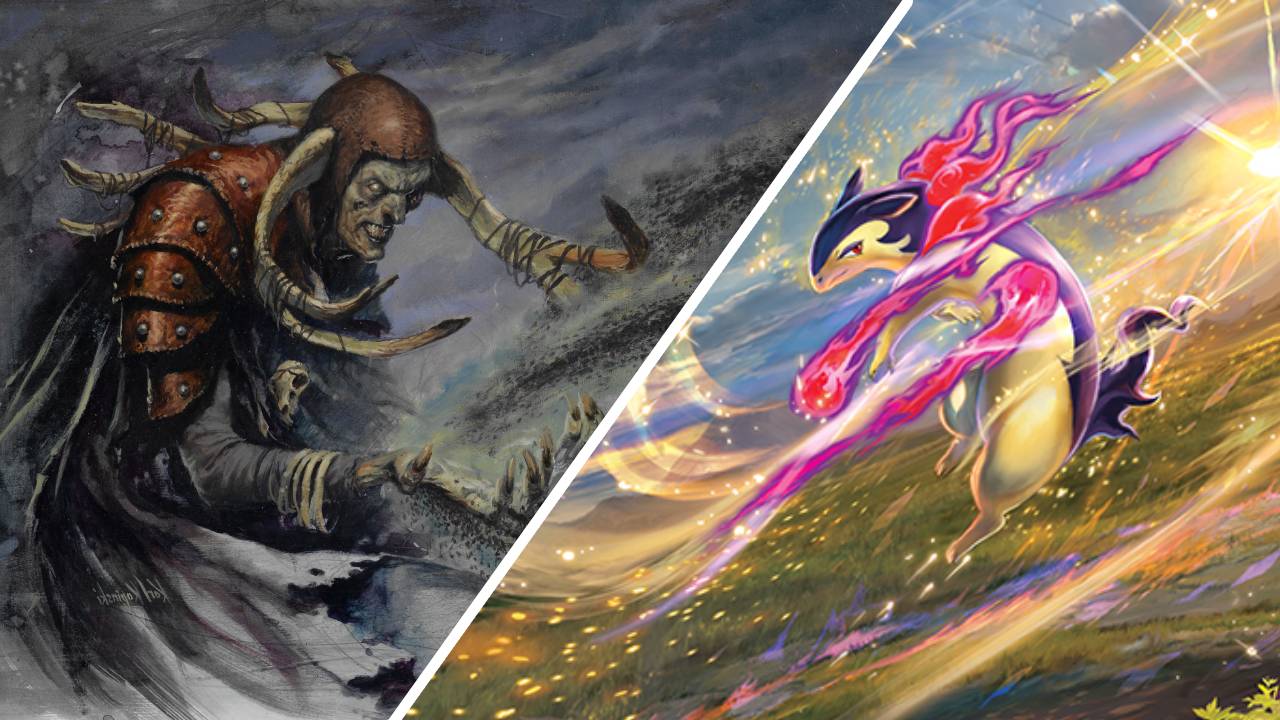Trading Card Games like Magic: The Gathering (MTG) and Pokémon have captivated players worldwide, each offering unique experiences. Deciding which is better depends on personal preferences, as each game has distinct characteristics appealing to different types of players. We’re going to be comparing MTG vs Pokémon, so you can choose what the best TCG is.
Pokémon Cards are More Expensive Than MTG

Pokémon cards often command higher prices than MTG. This trend is partly due to Pokémon’s extensive reach beyond just card players, attracting collectors and fans of the broader Pokémon universe. Rare Pokémon cards, especially those from early editions or with unique misprints, can fetch astronomical prices. On top of that, there’s just so many Pokémon cards in production, which we’ve covered in our Pokémon statistics article.
In contrast, MTG cards, while also valuable, usually appeal more to players than collectors, keeping their prices slightly more grounded in the game’s utility rather than collectible rarity. Still, though, that didn’t stop Post Malone from buying an MTG card for millions of dollars.
MTG is a Lot More Complicated Than Pokémon
MTG is known for its complexity and depth. It offers a vast array of strategic possibilities, with a ruleset that can be daunting for new players. This complexity is a draw for players who enjoy deep strategic and tactical gameplay. Pokémon, on the other hand, is often seen as more accessible, especially for younger players or those new to TCGs. Its rules are simpler, and the gameplay is generally quicker and more straightforward, making it an excellent entry point into the world of trading card games.
They Both Target Different Audiences
MTG and Pokémon target different audiences, which is reflected in their game design and community culture. MTG often appeals to an older audience that values strategic depth and competitive play. Pokémon, with its roots in a globally popular multimedia franchise, attracts a broader age range, including younger players. The community events for Pokémon tend to be more family-oriented, while MTG events can be highly competitive.
How Do the Mechanics Compare Against Each Other?
Breakdown of Key Mechanic Differences Between MTG and Pokemon
The key mechanics of MTG and Pokémon differ significantly. In MTG, players use mana from lands to cast spells and summon creatures, with a focus on resource management and strategic planning. Pokémon, in contrast, revolves around Pokémon battles, with players using energy cards to power their Pokémon’s abilities. MTG’s gameplay often involves a deeper level of strategic complexity, whereas Pokémon emphasizes character and ability combinations.
Comparison of Game Structure in MTG and Pokémon TCG
A typical game of MTG involves players drawing from a deck of at least 60 cards, using a mix of spells, lands, and creatures to defeat their opponent. Strategy in MTG involves anticipating the opponent’s moves and carefully managing resources. You also have smaller decks such as draft decks, essentially a 40-card deck.
Magic: The Gathering Game Structure
- Untap Phase: Players begin their turn by ‘untapping’ all tapped cards, making them available for use again.
- Upkeep Phase: Some card abilities may trigger during this phase.
- Draw Phase: The player draws a card from their deck.
- Main Phase 1: The player can play lands, cast spells, and activate abilities. This is where much of the strategic planning happens.
- Combat Phase: This phase has several steps: beginning of combat, declare attackers, declare blockers, combat damage, and end of combat. Players attack with their creatures and defend with theirs.
- Main Phase 2: Similar to Main Phase 1, allowing players to continue playing cards and activating abilities.
- End Phase: The turn ends, and any “end of turn” effects occur.
In MTG, the game’s tactics revolve around efficiently managing resources (like mana), strategically playing creatures and spells, and reacting to the opponent’s moves. The depth of MTG’s strategy lies in anticipating the opponent’s actions, understanding the current meta, and making complex decisions based on a wide array of possible interactions.
Pokémon TCG Game Structure
On the other hand, Pokémon games are much faster-paced, with players drawing from a 60-card deck, focusing on evolving Pokémon and executing strategic attacks to “knock out” the opponent’s Pokémon.
- Begin Turn: Draw a card.
- Bench Pokémon Phase: Players can put any Basic Pokémon cards from their hand onto their bench (the playing field).
- Attach Energy: Players can attach an Energy card from their hand to one of their Pokémon.
- Play Trainer Cards: Players can use any number of Trainer cards to influence the game.
- Evolve Pokémon: Players can evolve their Pokémon if they have the corresponding cards in their hand.
- Attack: The active Pokémon performs one of its attacks, using up the required energy.
- End Turn: The player’s turn ends.
In Pokémon, the tactics often center around building up powerful Pokémon, using trainer cards for strategic advantages, and choosing the right moments to attack. The game is generally more straightforward than MTG, with an emphasis on efficient resource (energy) management and maximizing the potential of each Pokémon in play.
Deck Building is Wildly Different
MTG deck building is a complex and nuanced process, involving a deep understanding of the available card pool and meta-game. Players must balance various types of cards while considering intricate interactions and strategies.
In Pokémon, deck building is more straightforward, typically centered around powerful Pokémon and the energies and trainer cards that support them.
MTG and Pokemon TCG Have Fairly Similar Formats
Both MTG and Pokémon offer a variety of play formats, catering to different styles and preferences. These range from casual play to highly structured competitive tournaments. While the specifics of these formats differ, the underlying principle of providing diverse ways to enjoy the games is a common thread, allowing players to engage at their preferred level of competitiveness and investment.
MTG Tournament Formats
- Standard: Features the most recent sets of MTG cards. It’s constantly evolving, requiring players to adapt to the changing card pool.
- Modern: Includes cards from all sets released since 2003 (8th Edition onwards). It offers a broader card pool than Standard, leading to a diverse range of decks.
- Legacy and Vintage: These formats allow almost all cards from MTG history, with Vintage having a minimal banned list and Legacy having a more extensive one. Both are known for powerful decks and fast gameplay.
- Commander (EDH): A casual multiplayer format where each player uses a 100-card deck led by a Legendary Creature (the Commander). It’s known for its social aspect and creative deck building.
Pokémon TCG Tournament Formats
- Standard: Similar to MTG’s Standard, this format includes the most recent sets. It’s popular for its accessibility and for reflecting the current state of the game.
- Expanded: Allows cards from a larger range of sets, giving players more options for deck building compared to Standard.
- Limited: Players build decks from a limited pool of cards provided at the event, such as from booster packs. This format tests players’ deck-building skills on the spot.
Key Differences
- Card Pool: MTG’s formats, especially Legacy and Vintage, can include cards from the game’s entire history, leading to a vast and complex card pool. Pokémon’s formats are generally more restrictive, focusing on newer sets.
- Gameplay Variety: MTG offers a wider variety of formats, each with unique rules and deck-building challenges, catering to both competitive and casual players. Pokémon’s formats are fewer but are designed to be more accessible, especially to newer players.
- Deck Building: MTG’s broader range of formats and cards allows for more diverse and complex deck-building strategies. Pokémon’s formats, while still offering strategic depth, tend to have a more straightforward approach to deck building.
What is the Most Popular TCG between MTG and Pokemon?
If considering pure sales, Pokémon often leads, partly due to its wider appeal across various age groups and its connection to a larger media franchise. However, in terms of dedicated player base and competitive scene, MTG holds a significant position, with a long-standing community and a deeply ingrained presence in the world of competitive card gaming. Ultimately, both games stand as titans in the TCG world, each with its own strengths and devoted fanbase.



